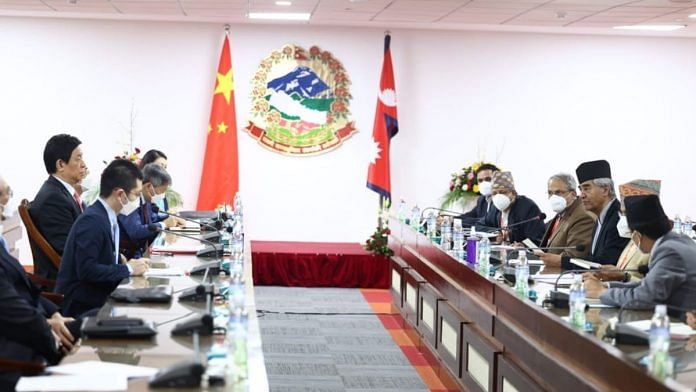As China marks 10 years of the Belt and Road Initiative, a global debate has risen about its impacts and repercussions in the member countries. Nepal is debating the current status of BRI, with political leaders and government officials asking why it’s not making any progress.
Since Kathmandu signed up for the initiative in 2017, the project’s tale has become similar to the parable of blind men and an elephant—everyone perceives the BRI differently and few in the country could claim to have a coherent understanding of what it is and where it’s headed.
Various media programmes have barely helped the Nepalese bridge this knowledge gap. The dominant narrative is that not a single project has so far been executed under the BRI.
Chinese narrative, confused Nepalese
At the same time, the Chinese side is sending a conflicting message about the status of BRI in Nepal. On the one hand, it has put Pokhara International Airport under the initiative, whose loan agreement was signed before Nepal signed the BRI. On the other, it is pressing the Nepal government to make progress on the project. The Chinese side is also saying that some BRI projects relating to road and tunnel expansions and railway connectivity are gradually making progress.
Officials from the two countries are working on a BRI implementation plan. Furthermore, the Chinese side says that the BRI is not only about the big infrastructure projects, but also about components such as policy coordination, unimpeded trade, financial integration, and connecting people.
Chinese experts and officials maintain that whatever support they provide to Nepal is now under the BRI framework. That includes the Global Security Initiatives and Global Civilizational Initiative; this has left Nepal puzzled and begs the question: If BRI is already implemented in Nepal, why are the two countries working on an implementation plan? And why is China pressing to make progress on the initiative? The confusion in Nepal regarding the status of the BRI is primarily due to two reasons. First, Kathmandu is receiving mixed messages from China, and second, the 2017 agreement remains opaque.
Nepal signed the BRI with high optimism, hoping that the project would immensely help it bridge the infrastructure gap. That could be the reason why Kathmandu reportedly submitted 36 projects for implementation under BRI, which was later brought down to nine. Even today, Nepali politicians, mainly the communist leaders, are hopeful that China will help build infrastructure projects under the grant. However, China’s BRI white paper clearly mentions that the principle of joint contribution is meant to suggest a collaborative effort for shared development, and shouldn’t lead to BRI being seen as an international aid programme or geopolitical tool.
Also read: For IMEC to have any real impact, fix the finance first. Only then it…
Nepal’s second thoughts over BRI
Six years on, it seems that the Nepal government has understood the basic fact of BRI—the initiative is essentially about taking loans from Chinese banks to build infrastructure and repay the amount in due time. And that is why BRI isn’t moving ahead. Issues such as interest rates, which are reportedly around 2 per cent, also remain opaque. The Nepali Congress, the largest party in the country, clarified in 2022 that Kathmandu is not in a position to take loans under BRI to build infrastructure projects.
In the meeting with Chinese foreign minister Wang Yi, then-Prime Minister Sher Bahadur Deuba clearly stated his party’s position. While the two ruling communist parties align on several aspects, the Nepali Congress is mincing its words, careful about making decisions on BRI.
It’s not that Nepal should not take loans from China, as grants alone cannot bridge the infrastructure gap. Beijing’s support can help in this regard. After all, China has been a key development partner of Nepal since the 1950s.
But Kathmandu isn’t hurrying to take loans from Beijing because of the ongoing economic crisis and the rising debt burden. Moreover, big infrastructure projects—not just those funded by China or the Asian Development Bank but the Nepal government’s own projects as well—are unable to generate sufficient revenue to repay the loans.
BRI projects in Nepal are not moving ahead due to two reasons. First, Nepali leaders are under geopolitical pressure not to embrace BRI, which is why Prime Minister Pushpa Kamal Dahal did not make any progress on BRI when he visited China this year, though he was a strong advocate of the initiative in 2017.
The second reason is obvious: Nepal is not in a position to take loans to fund big projects lest it piles up the debt. Nepal needs to build big infrastructure projects, but also ponder about where big projects are viable in the country. Nepal should tell big countries to provide grants instead of loans to build infrastructure projects.
The author is a Kathmandu-based journalist and writer. Views are personal.
(Edited by Humra Laeeq)



